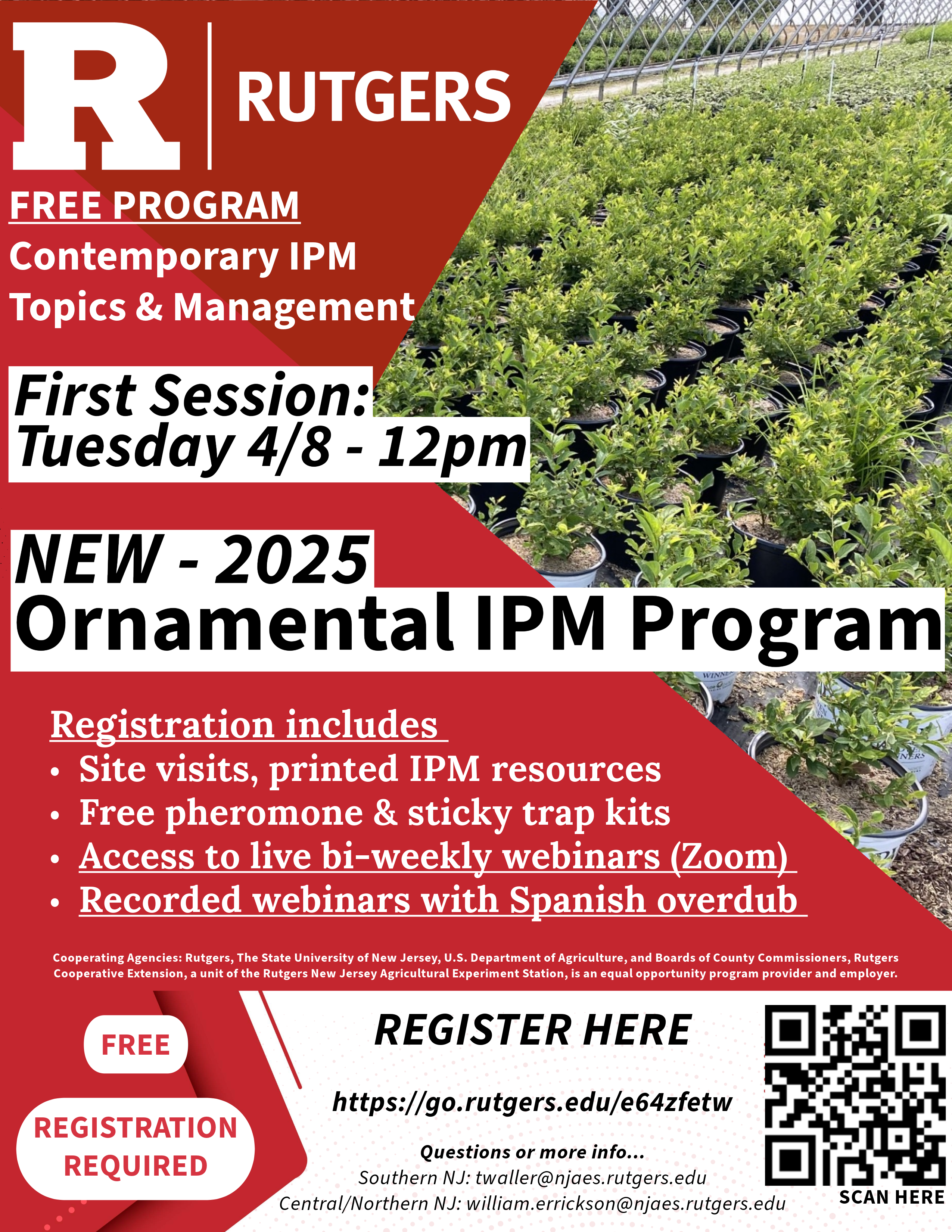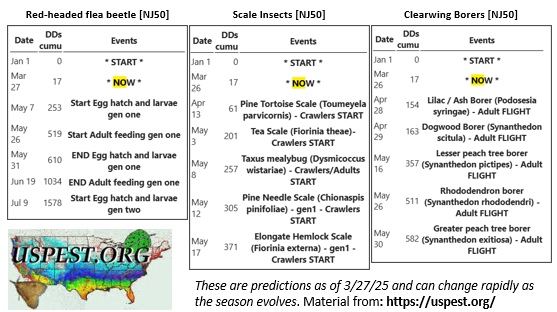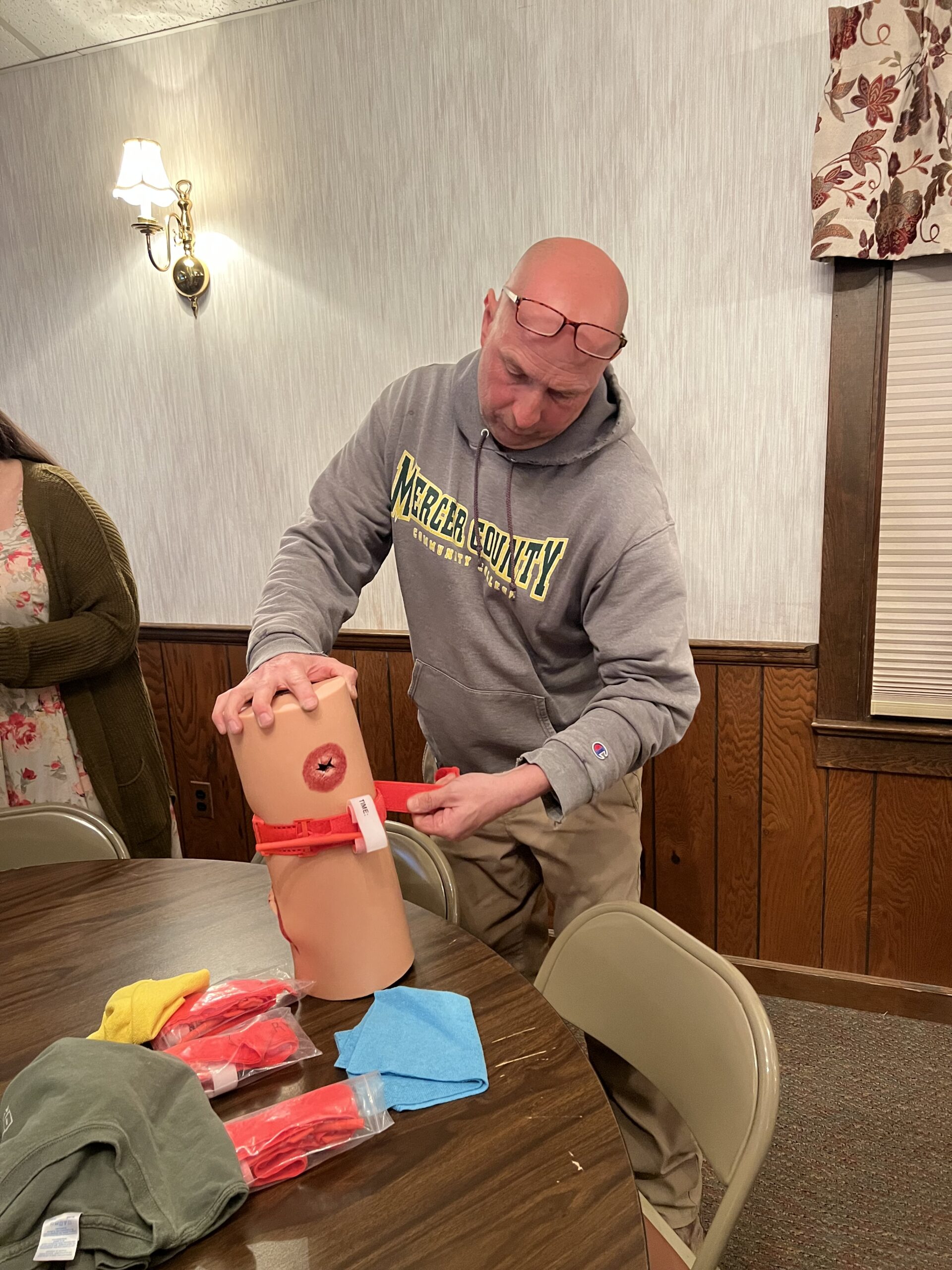New Jersey Department of Agriculture (NJDA), Division of Agricultural and Natural Resources is offering the following grant opportunity:
Nutrient Management Assistance Grants
Available Funding: Up to $25,000
Application Deadline: June 16, 2025
Funding Period: Three Years
The New Jersey Department of Agriculture (NJDA), Division of Agricultural and Natural Resources is pleased to announce a funding opportunity to support manure spreader purchase and maintenance, and to establish a community use program for the manure spreader. This grant aims to advance nutrient management Best Management Practices (BMPs) across New Jersey farms by enabling the shared use of properly maintained equipment.
Eligible Applicants:
• New Jersey-based individuals
• Agricultural businesses
• Cooperatives
• Not-for-profit organizations (NFPs)
• Government agencies
Applicants should demonstrate a strong working relationship with local agricultural producers and must be committed to supporting nutrient management in their communities.
Program Highlights:
• Purchase and maintain a manure spreader
• Establish a community use program for the manure spreader with a minimum of five farms
• Support the implementation of Animal Waste Management Plans (AWMPs) with Nutrient Management Plans or nutrient budgets where the manure spreader will be used
• Implement all funded activities over a three-year period
For application materials and additional information, please visit: https://www.nj.gov/agriculture/grants/njdanutrientmanagementgrants.html
Landscape, Ornamentals, Nursery, and Turf Edition
Seasonal updates on ornamental, nursery, and turf pests.
Subscriptions are available via EMAIL and RSS.
Companion Website Links:
 Rutgers Turf Blog - Articles on turfgrass diseases and cultural practices for the commercial turfgrass industry. Subscription available via RSS.
Rutgers Turf Blog - Articles on turfgrass diseases and cultural practices for the commercial turfgrass industry. Subscription available via RSS.
 Rutgers Weather Forecasting - Meteorological Information important to commercial agriculture.
Rutgers Weather Forecasting - Meteorological Information important to commercial agriculture.
Need a Manure Spreader? Nutrient Management Assistance Grants – Deadline 6/16/25
Ornamental IPM 4/8 Recording Upload – Next session Tuesday 4/22
Ornamental IPM – next session is Tuesday 4/22/25
Sign up here for the NEW 2025 – Rutgers Ornamental IPM Program.
Click here for a PDF of April 08, 2025 webinar that can be printed and used as a field guide or similar
Click here for a VIDEO recording of April 08, 2025 webinar
Next sessions topic:
- Updates (GDD, Miticides, Ambrosia Beetle, Boxwood blight alerts)
- Boxwood leafminer
- Holly leaf miner
- Eastern tent caterpillars
- Spongy moth
- Evergreen lacebugs
- Clearwing Borers (and trapping)
- Red-headed flea beetle (adult pre-treatment)
- Diseases: Fire Blight and Rusts
2025 Registration includes:
The focus of this program is to provide timely updates on pest, disease, and weeds impacting commercial ornamental producers. The webinars will focus on the most important pests for a 2 week interval, will be recorded, and will be shared shortly thereafter with Spanish overdub (spoken word). The trap packages are in an effort to find grower led solutions for monitoring economically important pests throughout the multiple regions of New Jersey. Please consider joining this program for its inaugural year.
- Site visit to your ornamental nursery/farm from Rutgers agents
- Delivered printed IPM resources (Guides, factsheets, bulletins)
- Free pheromone & sticky trap kit + guidance on setup/monitoring
- Access to live bi-weekly webinars (Zoom)
- Every Second and Fourth, Tuesday, April through September
- Webinars will be recorded – posted later with Spanish overdub
This program is free, however registration is required.
(Next webinar Tu 4/22 at 12PM)
NJ DEP issues Open Burn Permit from April 6 through April 12, 2025
To Agriculture and Agribusiness Representatives:
The New Jersey Department of Environmental Protection (DEP) is issuing this notice concerning open burning due to colder spring overnight temperatures presently forecasted for areas of New Jersey from April 6 (Sun), through April 12 (Sat), 2025, which could adversely affect fruit, vegetable, and floriculture crops in bloom or near bloom around the state. The DEP intends to exercise its authority and discretion under the Air Pollution Control Code, N.J.A.C. 7:27, et seq., and other applicable authorities to permit the following procedure for open burning or the use of smudge pots to assist farmers in protecting their crops in low temperatures. These cold events could adversely affect some of the fruit, vegetable, and floriculture crops.
Note: The NJDEP and New Jersey Forest Fire Service caution all farmers and agriculture businesses with respect to the use of open burning in high wind velocity conditions. Please take note that farmers are encouraged to utilize smudge pots is warming as necessary during higher wind conditions. Use of open burning when wind velocity is greater than 5mph is strictly prohibited, may contribute to wildfire risk, and can carry significant penalties.
For the Burn Permit Application form, please see: https://www.state.nj.us/dep/parksandforests/fire/docs/ag-permit.pdf
The DEP intends to exercise its authority and discretion under the Air Pollution Control Code, N.J.A.C. 7:27, et seq., and other applicable authorities to permit the following procedure for open burning or the use of smudge pots to assist farmers in protecting their crops in low temperatures. Procedures for Open Burning and the Use of Smudge Pots Pertaining to New Jersey Fruit, Vegetables, and Floriculture
- Facilities that believe they will conduct open burning or use smudge pots must provide notice to the DEP 24-hour Communications Center at 1-877- WARN DEP (1-877-927-6337) prior to the use of either technique. • Facilities should notify DEP if they believe they may need to use either technique. • Where DEP cannot be notified in advance, a facility must notify DEP the following morning no later than 9:00 a.m. • The following information must be provided to DEP upon each notification:
- Name of the individual deciding to conduct the open burning or use of smudge pots.
- Name of the farm or facility
- Actual street address of the facility on which either technique will be used.
- Contact person and telephone number at the facility.
- Predicted temperature (in F) at facility anticipated when the technique will be used.
- Predicted wind speed at facility anticipated when the technique will be used.
- Predicted hours of open burning or use of smudge pots
- Predicted material to be used for open burning or use of smudge pots.
- Upon completion of the open burning or the use of smudge pots, the facility must provide the following information within 2 business days to the DEP 24-hour Communication Center at 1877-WARN DEP (1-877-927-6337):
- The DEP Communications Center incident number
- Ambient orchard(s) temperature (in F) at the time the technique was used.
- Actual wind speed at the orchard(s) location at the time the technique was used.
- A statement that all restrictions in the open burning or use of smudge pots were followed. The restrictions are noted below.
RESTRICTIONS
- NO OPEN BURNING WILL BE PERMITTED UNLESS: 1. The temperature within the orchard area is at or below the critical temperature for the bud stage. The attached report lists the critical temperatures for New Jersey crops. -AND 2. The wind velocity is less than 5 miles per hour.
- Authorized open burning material may consist only of either the following materials: clean scrap lumber (untreated), felled trees, prunings, hedgerows or firewood.
- ABSOLUTELY NO refuse, trade waste, tires, garbage, or other solid waste may be added to the authorized open burning material. Introduction of any unauthorized material into an authorized open burn is a violation of environmental laws and may carry significant penalties.
- Smudge pots are only permitted when the temperature within the orchard area is at or below the critical temperature for the bud stage (wind velocity restriction does not apply).
- Smudge pots must be fueled only with either kerosene or No. 2 fuel oil.
- Failure to abide by these provisions and restrictions may result in enforcement action.
Register for the NEW – 2025 Ornamental IPM Program PLUS Boxwood Blight, Pest emergence, Updates

Please consider signing up for the NEW 2025 – Rutgers Ornamental IPM Program.
The focus of this program is to provide timely updates on pest, disease, and weeds impacting commercial ornamental producers. The webinars will focus on the most important pests for a 2 week interval, will be recorded, and will be shared shortly thereafter with Spanish overdub (spoken word). The trap packages are in an effort to find grower led solutions for monitoring economically important pests throughout the multiple regions of New Jersey. Please consider joining this program for its inaugural year.
Registration includes:
- Site visit to your ornamental nursery/farm from Rutgers agents
- Delivered printed IPM resources (Guides, factsheets, bulletins)
- Free pheromone & sticky trap kit + guidance on setup/monitoring
- Access to live bi-weekly webinars (Zoom)
- (First session NEXT TUESDAY 4/8 @ 12PM)
- Every Second and Fourth, Tuesday, April through September
- Webinars will be recorded – posted later with Spanish overdub
This program is free, however registration is required.
| Boxwood Blight Risk Assessment as of 3/4/2025 | |||||||||
| Region | Location | CODE | 31-March | 1-April | 2-April | 3-April | 4-April | 5-April | |
| Southern | Upper Deerfield | NJ50 | Very Low | Very Low | Very Low | Low | Minor Risk | Very Low | |
| Central | Howell / Freehold | NJ10 | Minor Risk | Very Low | Very Low | Low | Minor Risk | Very Low | |
| Northern | Wantage | NJ79 | Low | Very Low | Very Low | Low | Risk | Very Low | |
| M | T | W | TH | F | S | ||||
| Please check YOUR LOCAL risk (click here) | |||||||||

Please download and print the Rutgers Nursery and Landscape Pest Scouting Guide or Conifer and Christmas Tree Pest Scouting Guide and refer to this post “Obtaining your local growing degree-days (GDD)” for additional information. (See pest scouting guides for complete list of references)
Please SHARE what you SEE!! If you see a pest, disease, otherwise interesting or troublesome issue please report it to the Working Group by following the QR Code on the front of the Pest Scouting Guides or by filling out this reporting form.
Keep reading for more resources!
Last Call: Farmer Resource Fair in Somerset County
 All New Jersey farmers are invited to attend this Farmer Resource Fair which will feature an array of agricultural service providers. In-between a light breakfast and a hearty lunch, there will be engaging presentations and opportunities to visit with service providers at their table displays. The program schedule, as well as a preliminary list of service providers who’ve confirmed their attendance, is included below.
All New Jersey farmers are invited to attend this Farmer Resource Fair which will feature an array of agricultural service providers. In-between a light breakfast and a hearty lunch, there will be engaging presentations and opportunities to visit with service providers at their table displays. The program schedule, as well as a preliminary list of service providers who’ve confirmed their attendance, is included below.
The event will be held on Friday, April 11, 2025 from 8:30 am to 2:00 pm at the Ted Blum 4-H Center located at 310 Milltown Road, Bridgewater, NJ 08807.
Click here to register for this free event (registration is required). Please register by April 1, 2025.
This collaborative event is being organized by Rutgers Cooperative Extension of Somerset County, Somerset County Agriculture Development Board, and the State Agriculture Development Committee Next Gen Program. We hope you will join us! [Read more…]
Last Call: Stop the Bleed Training in Burlington County
 Rutgers Cooperative Extension, in partnership with the Vegetable Growers Association of NJ and the Rutgers NJ Medical School, will host a Stop the Bleed training on Tuesday, April 8, 2025 from 10:00 am to 12:00 pm at the Rutgers EcoComplex located at 1200 Florence Columbus Rd, Fieldsboro, NJ 08505.
Rutgers Cooperative Extension, in partnership with the Vegetable Growers Association of NJ and the Rutgers NJ Medical School, will host a Stop the Bleed training on Tuesday, April 8, 2025 from 10:00 am to 12:00 pm at the Rutgers EcoComplex located at 1200 Florence Columbus Rd, Fieldsboro, NJ 08505.
Don’t miss this opportunity to learn the life-saving skills of pressure application, wound packing, and use of tourniquets. Attendees of this free training will also receive a complementary bleeding control kit. Space is limited, register today! Please complete our pre-registration form by Monday, April 1.
Questions? Email Kate Brown, RCE-Somerset County Ag Agent, at kbrown@njaes.rutgers.edu or call 908-526-6293.
